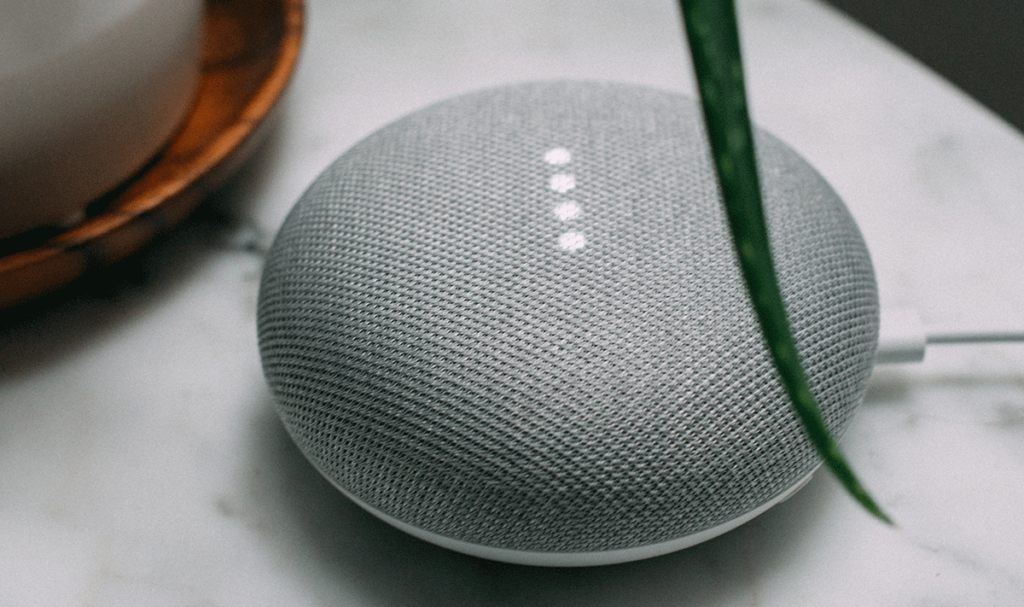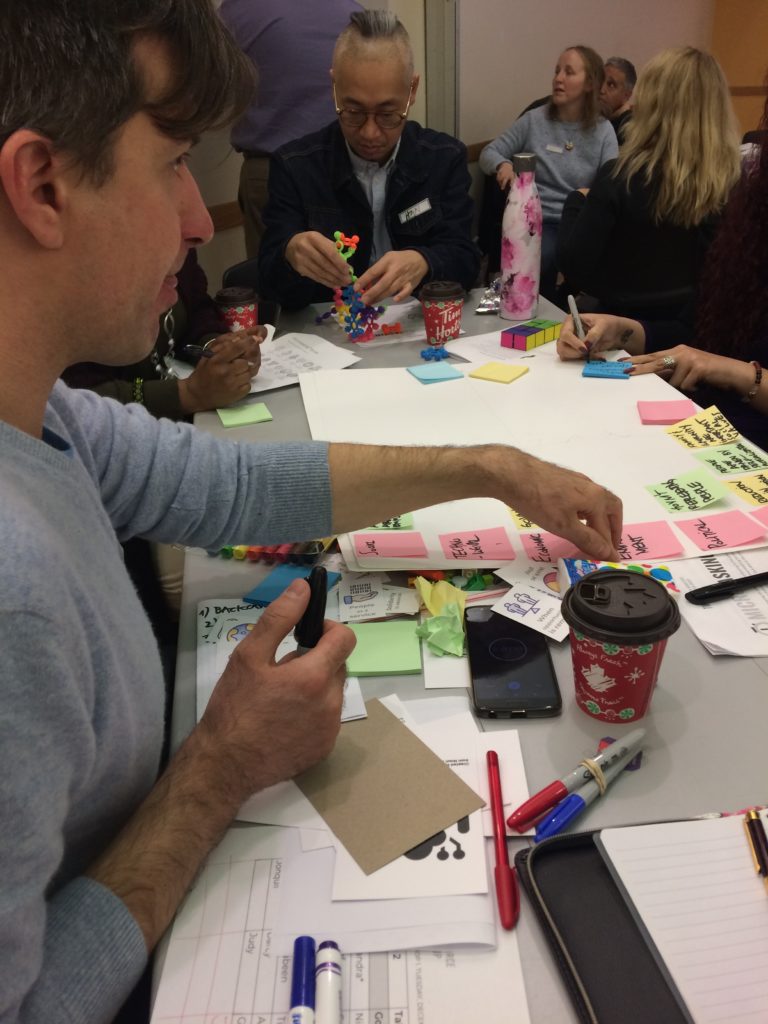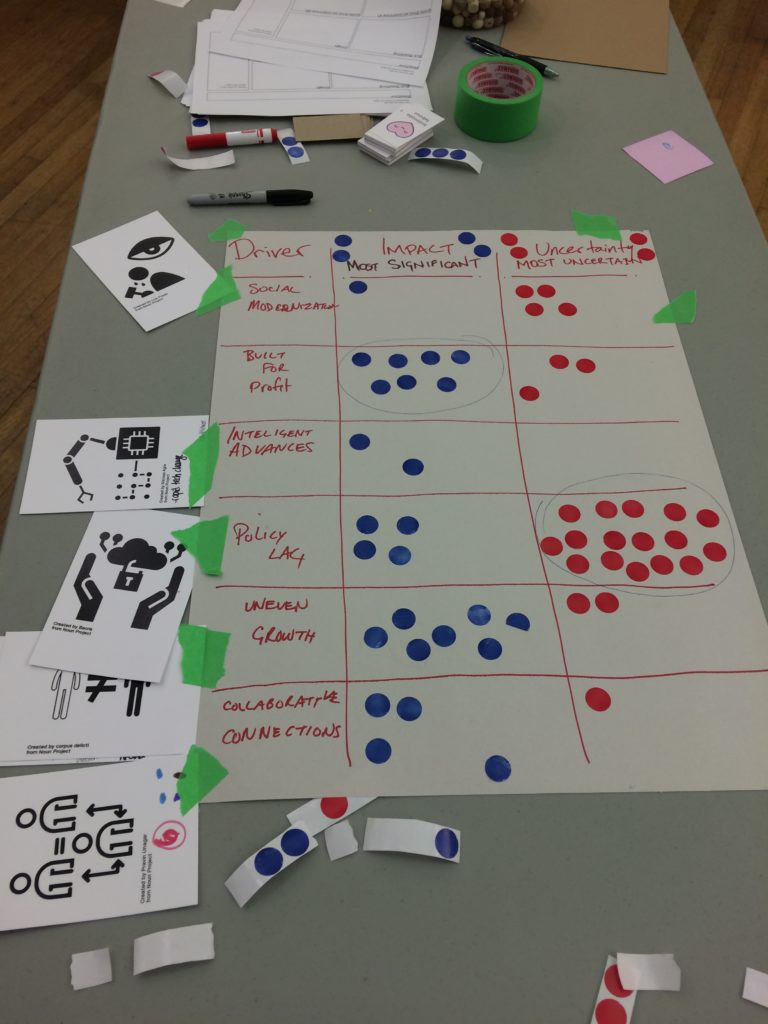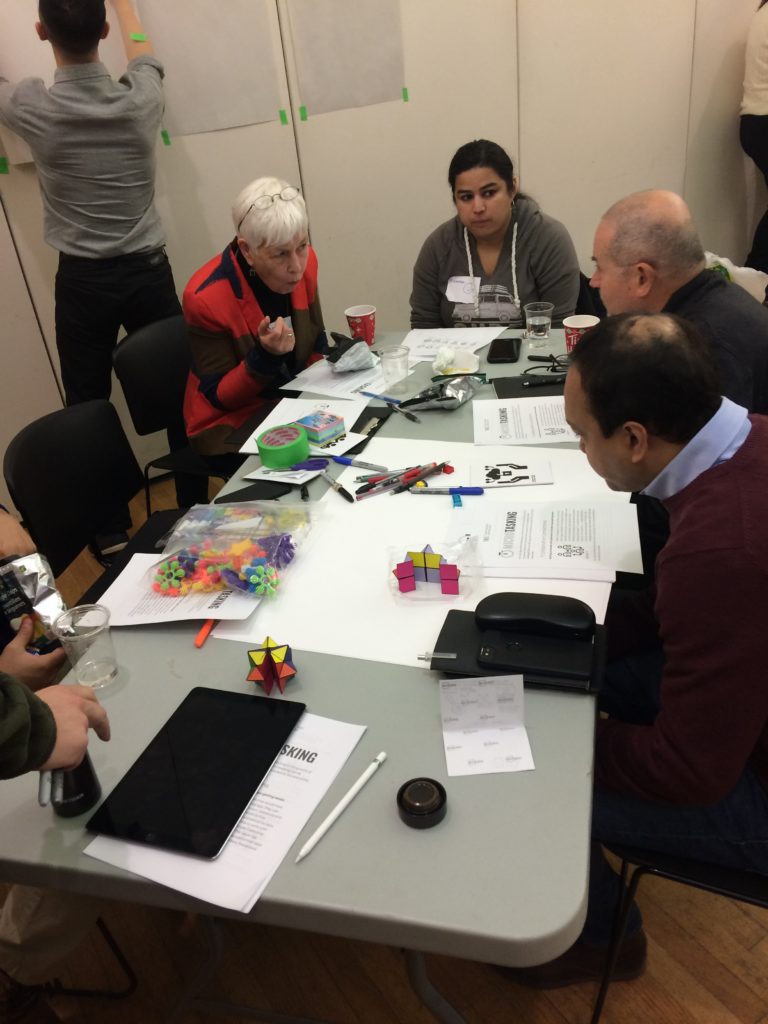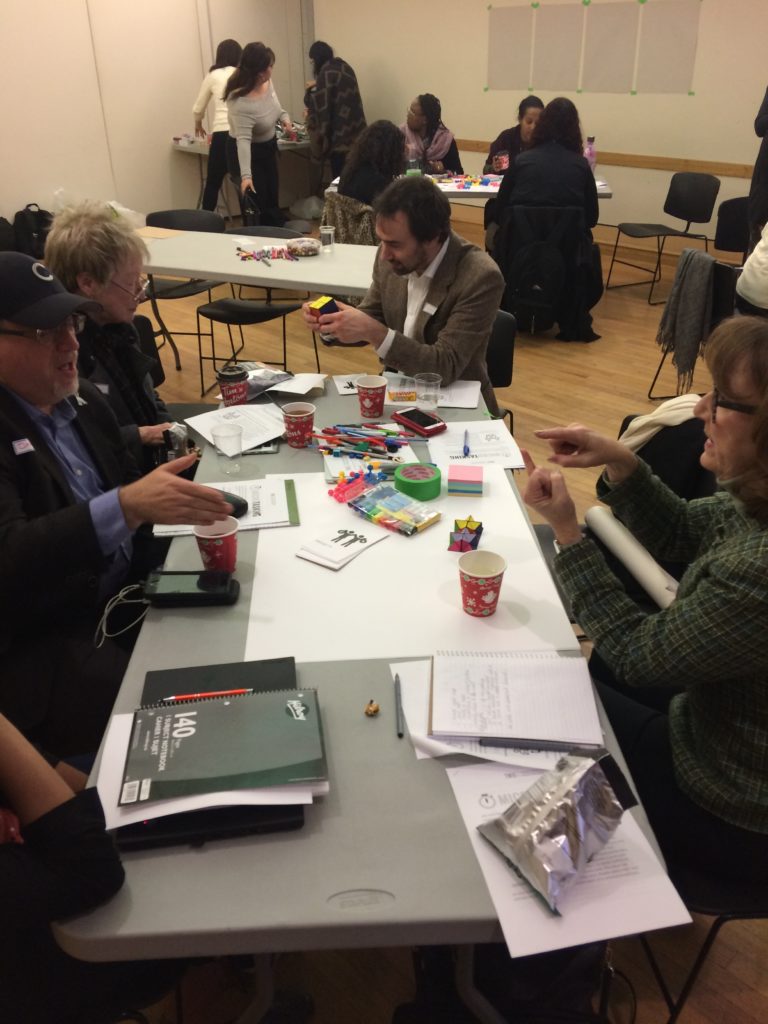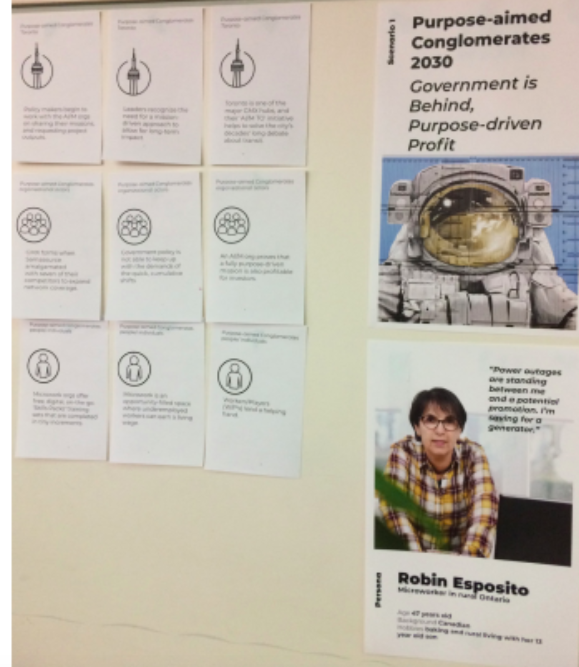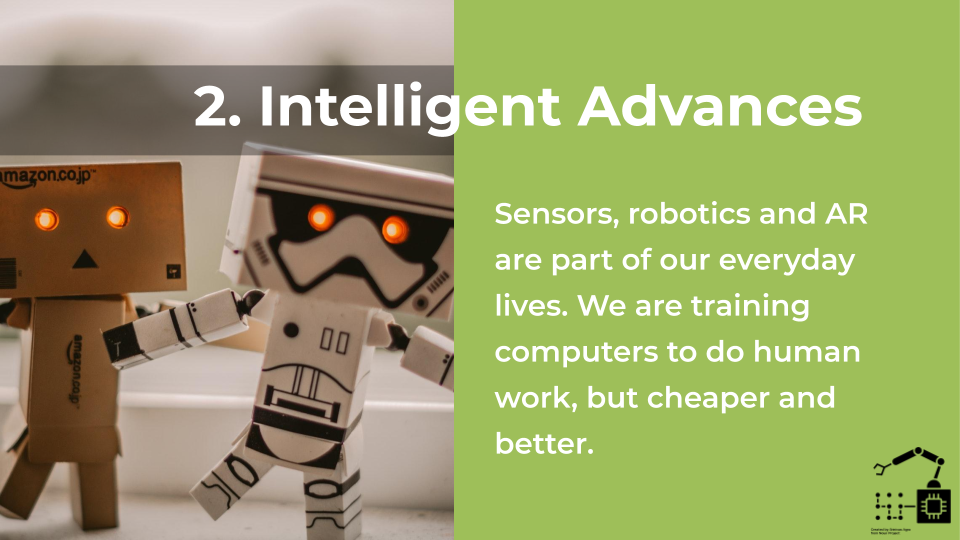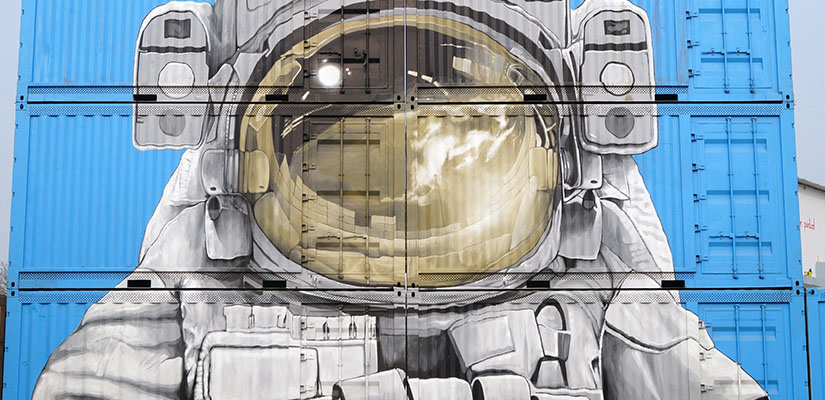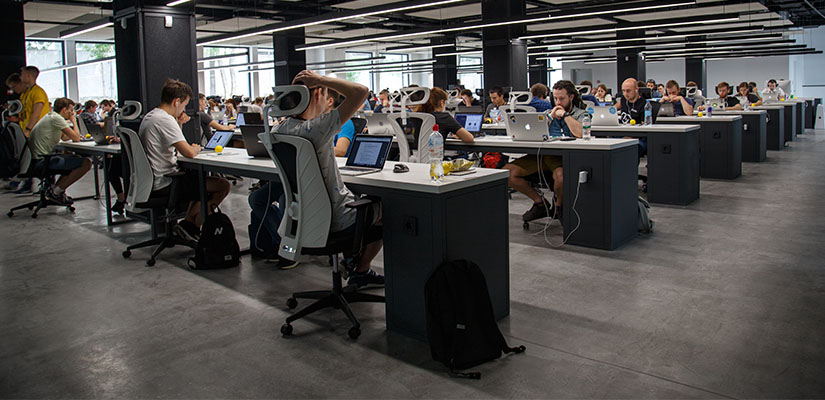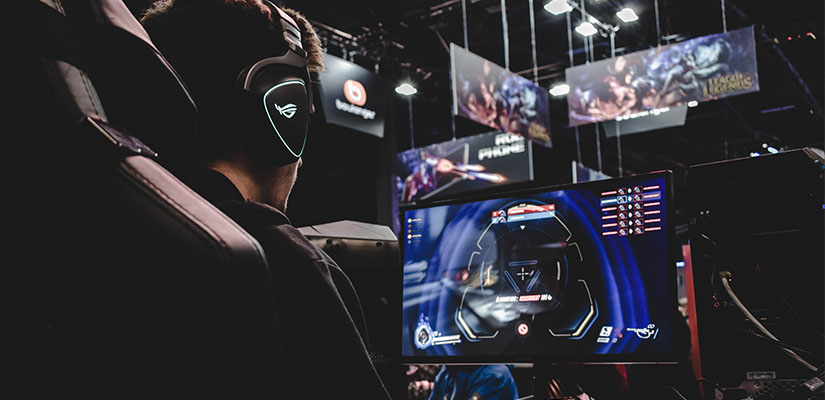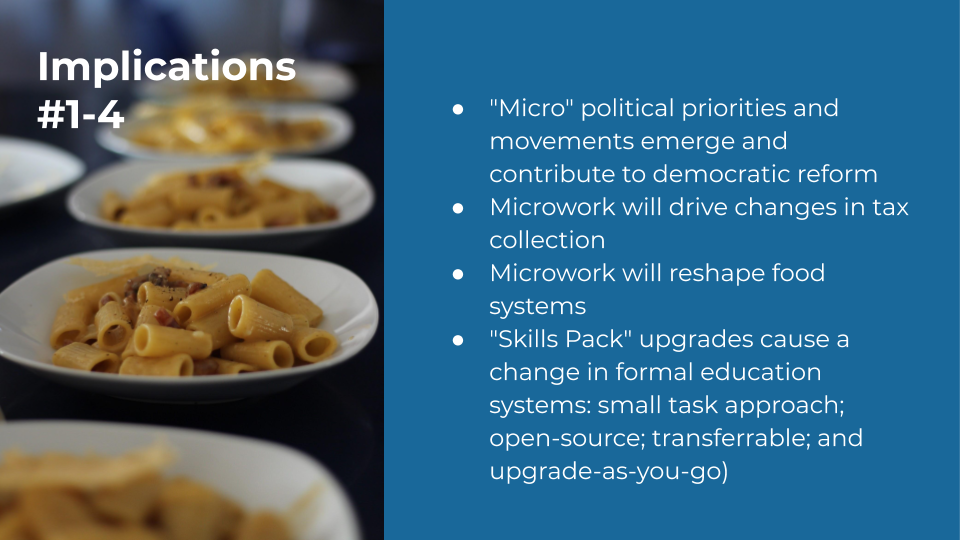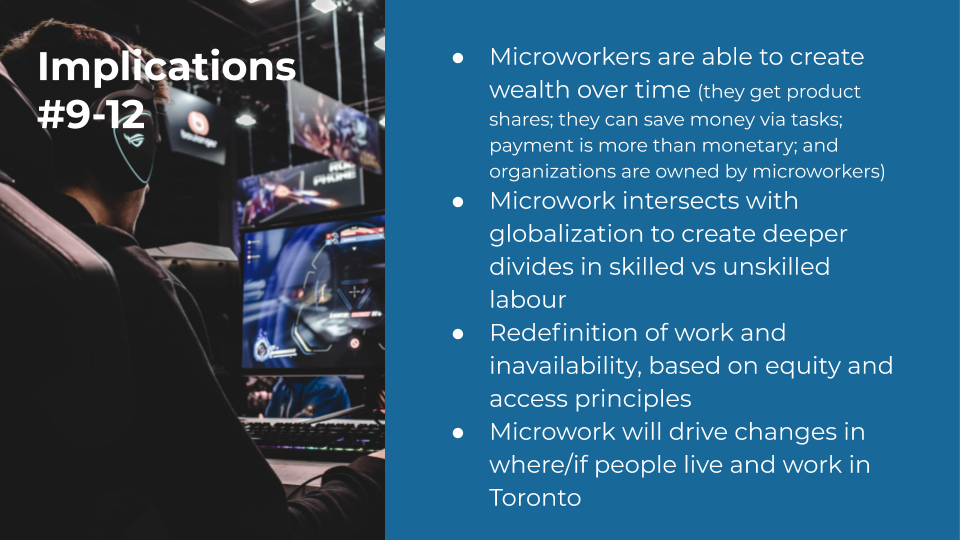
Foresight: A deeper dive
Secondary research provides a good basis for much labour market analysis. In this project, however, we faced the challenge of finding good information on Toronto’s invisible workforce, specifically related to microtasking. Therefore, TWIG decided to dive into foresight methodology to reduce uncertainty.
Foresight can improve the resilience of program design and create readiness for the possibilities of the future. We applied foresight to:
- Systematically consider plausible, possible, and at times improbable futures
- Understand the implications resulting from these different futures
- Use the insights gained to improve present-day planning and decision making
A deeper dive into microwork
The futures of microwork are the result of meticulous collection and analysis of the changes that are actually taking place right now. The facilitators applied creative thinking to develop the scenarios. They also worked with creative logic established by literature reviews and participatory action research.
Each phase of the foresight project builds on the research and insights gained from the prior phase. So by the time we arrived at the project’s five areas of strategic perspectives, we had processed hundreds of inputs.
Resource: Toolkit
Are you planning microwork research? We used presentations, documents, and props for this project and documented them in the Microwork Project Toolkit.
Phase 1. Signals sprint
The project started with a signals sprint by a class of University of Toronto Scarborough students. The students provided 374 signals and the researchers found an additional 104 signals. The research team also reviewed 85 reports on non-standard employment, the gig economy, and specifically microworking. From the initial research phase twelve microtasking trends surfaced.
Output: Trends
Phase 1: Microtasking signals sprint
Microwork: An introduction
Phase 2. Expert interviews and roundtables
The trends provide a sense of how people are working. Next, we needed insights into what is driving the changes to the way people are working. We reached out to 58 subject matter experts identified through project research. Nine people participated in one of two roundtable sessions held on October 30, 2019. We spoke with other experts in individual interviews to help us with specific aspects of microwork. The roundtables and interviews informed the drivers used to develop the scenarios in workshop 1.
Five questions about microwork
Phase 2: Microwork trends to consider
Everyone notices trends in the world around them. Spring 2019’s fashion colour was yellow. Meat-free…
TWIG’s microwork library
Phase 3. Foresight workshops
The research team designed the foresight workshops to help us to consider how microwork might affect life in Toronto over the next decade. Program designers and managers, standards setters and policymakers, and other stakeholders in the area of workforce development attended the workshops.
We also wanted to ensure that at least one person at each table was a young person who was living with non-standard employment as their reality. Therefore, we offered a small honorarium because their time was not being compensated through an employer.
We also wanted to create an opportunity for Toronto’s social service agency staff to think about microwork. Early research indicated that it is likely to affect their clients and programming in the coming decade. So we also made a special effort to get people working in the field around the table.
Marco Campana reached out and prepared an article on the top five questions that human services professionals have about microwork >
The half-day workshops were knowledge-building and sharing opportunities. However, they were also a no-fee professional development activity that introduced microwork. Participants rated the workshops as informative and highly interactive, and we offered a certificate of completion for professional development purposes.
Maggie Greyson and Cheryl May led the workshops. Each workshop consisted of four working tables facilitated by Alastair Cheng, Ana Matic, Goran Matic, and Marco Campana. The facilitators also authored the scenarios and distributed them between workshops. Following workshop 2, the facilitators populated implications and strategic perspectives databases based on their notes.
Workshop photos
Workshop 1. Scenarios
TWIG hosted the first workshop on December 10, 2019. Participants considered the change drivers, then selected the top two drivers based on importance and uncertainty. Then each team was given a set of drivers. Finally, they developed the framework for four microtasking scenarios for 2030.
Microwork change drivers
Six change drivers were presented for discussion in the first workshop.
Although our invitee list was carefully considered, we did not ask that participants had any specific knowledge of foresight or microwork.
Apart from a brief questionnaire, all you need to bring is your perspective, voice, and creativity. To prepare for the workshop, we’ve have identified six drivers that contribute to the growth of microwork. Your pre-work is to rate each driver according to how it makes you feel, your level of uncertainty, and impact. Please complete the online questionnaire. It will take approximately five minutes.
A brief talk by Julian Posada level-set the discussion about microwork. Julian also prepared an article for this report, Microwork and the Platform Economy >
Alastair Cheng provided a brief that highlighted some of the reasons why a look at microtasking is important.
- The numbers of people involved in the online gig economy continue to rise, as evidenced by the Online Labour Index.
- World Bank findings indicate that statistically, the majority of microworkers on Mechanical Turk are women and that overall, young people are over-represented in online outsourcing jobs.
- The technological and algorithmic intermediary between work and employer triangulates the relationship in ways that fall outside established standard and nonstandard employment agreements.
- From the perspective of the economy, the insecure nature of microwork weakens wage growth overall.
Alastair also wrote Invisible Gigs >
Output: Scenarios
All scenarios
TORONTO 2030: TALES OF POLICY AND PROFIT
Scenario 1: Purpose-driven Conglomerates
Persona 1: Robin Esposito
Scenario 2: Profitably Public
Persona 2: Alyx Lee
Scenario 3: The Social Impact Franchise
Persona 3: Vasil Ramadani
Scenario 4: Corporate Cooperativism
Persona 4: Dan Yoon
Workshop 2. Implications
TWIG hosted the second workshop on January 7, 2020. The team designed it to take participants into the future depicted in their scenarios. The research team harvested the inputs from the December session to develop four 2030 microwork scenarios.
In this session, groups were assigned their scenario as a pre-read. They worked with the same groups as workshop 1. New participants were assigned across the tables.
The first part of the workshop was devoted to discussions about the implications for the workforce in 2030. Participants voted on the top 16 implications and selected eight as the most significant and most surprising. Participants then reconvened in their groups to set out strategic perspectives based on two implications per group.
At the start of workshop 1, participants presented an overall negative view of microwork. However, as the discussions progressed, people’s ideas about microwork gained complexity. Therefore, awareness grew into acceptance. The opportunity to consider how microwork could be used in beneficial ways opened up.
At the start of workshop 2, Ana Matic introduced her thesis, Microwork: Theory, Models and Mechanics for enabling impact through aggregate action. Ana’s article, Aggregate action, complexity, and microwork, presents a preferred microwork future >
Implications of scenarios
Phase 4. Foresight studio
The research team convened to analyze the workshop outputs and synthesize them into a set of strategic perspectives. First, we assembled the 42 discussion threads that came out of workshop 2. Then we categorized the inputs and developed a final set of five strategic perspectives on microwork in the GTA. It is our hope that program developers, policymakers and other stakeholders might consider these perspectives in their work.
Resource: Design research
We used the Design Research Techniques online repository. It’s an evolving resource with a range of techniques organized by the project lifecycle they best suit. The methods can be used with multiple stakeholders including potential users or audiences, partners or internal teams.
www.designresearchtechniques.com
Foresight process
THE PROJECT JOURNEY: FROM SIGNALS TO STRATEGIC PERSPECTIVES



Phase 1: Microtasking signals sprint



Phase 2: Microwork trends to consider
Everyone notices trends in the world around them. Spring 2019’s fashion colour was yellow. Meat-free options are on the rise. Part-time work is growing. Sometimes…


Phase 3: What’s driving microwork


Phase 4: Implications of microwork futures


Microwork futures: strategic perspectives
- Microtasking reports - March 12, 2020
- Microtasking project toolkit - March 2, 2020
- Microwork futures: strategic perspectives - February 24, 2020



